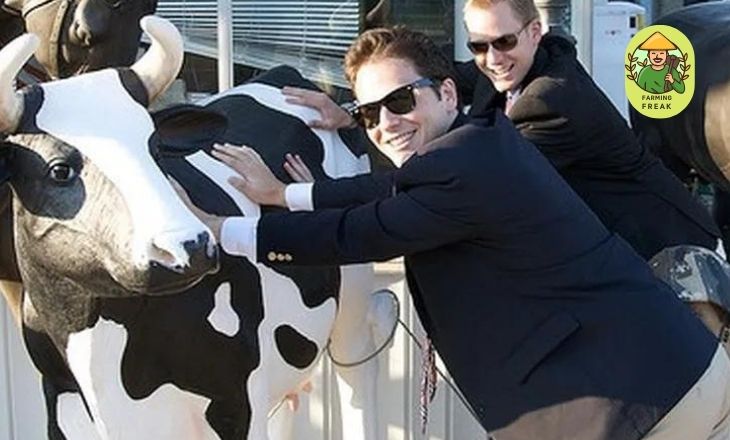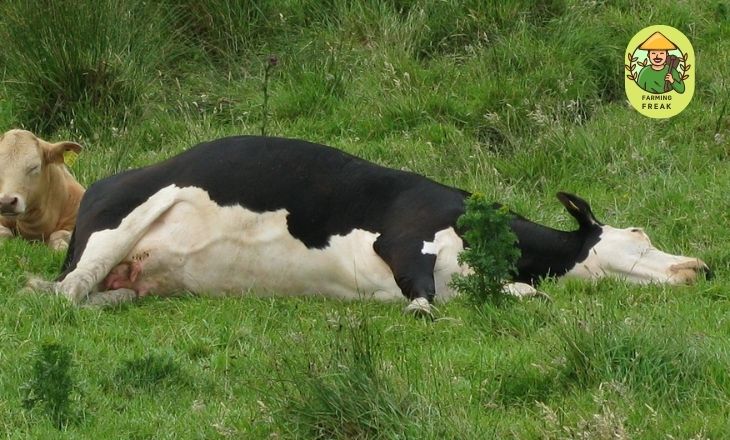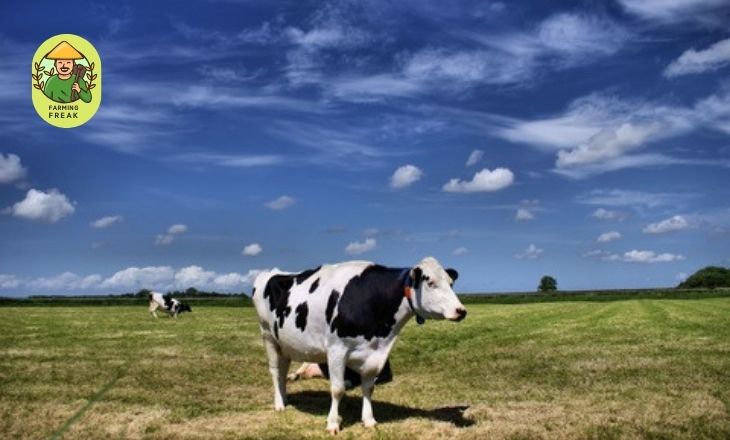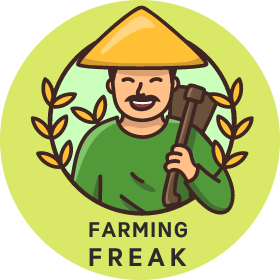As we venture into the world of agricultural communities, we have to challenge firsthand accounts and expert insights that challenge the popular narrative surrounding The Myth of Cow Tipping – A Farmer’s Perspective.
From exploring the anatomy and behavior of cows to understanding the logistical challenges involved in attempting such an endeavor, we embark on a journey that unveils surprising revelations about this seemingly harmless pastime.
What is Cow Tipping?
Cow tiping is a popular legend in rural areas, but the reality behind it may not be what many people think. It’s often portrayed as a group of people sneaking up on a sleeping cow and pushing it over, but cows are large and solid animals that are unlikely to be tipped easily. Some experts argue that it’s nearly impossible to tip over a cow without causing harm or injury to the animal.
The myth of tipping a cow likely stems from urban legends or humorous stories rather than actual events. Despite its enduring popularity, there is little evidence to support the idea that tipping a cow is a real activity.
In truth, cows are usually alert and aware of their surroundings while standing in fields, making them less susceptible to being tipped over by mischievous individuals.
Is Cow Tipping Real, Can It Be Done?
Many people think is Cow Tipping Real, it has long been a topic of debate, with some claiming it to be a real and achievable activity while others dismiss it as a mere urban legend. The truth lies in the biomechanics of cows and the physical limitations of humans.
Research has shown that it is nearly impossible for an average person to tip over a full-grown cow due to its size and weight distribution.
While some may recount anecdotes of successful cow tipping, these claims often lack evidence or scientific backing. In reality, attempting to tip over a cow can result in injury to both the animal and the individual, cows are sensitive creatures, and subjecting them to distress or harm goes against the ethical treatment of animals.
Tipping a cow remains largely mythological rather than practical. Instead of seeking out this dubious activity, individuals are encouraged to appreciate and respect the natural world around them, including the gentle giants we know as cows.
The Myth of Cow Tipping: A Farmer’s Perspective & Science Behind Cow Behavior
Solving The Myth of Cow Tipping A Farmer’s Perspectives, scientific research has debunked this myth, revealing that it is nearly impossible to tip over a full-grown cow with human strength alone. Cows are very stable and heavy animals, with a low center of gravity that makes them difficult to tip over.

Studies have shown that cows are astute animals with strong instincts for self-preservation. They are generally alert while resting and would likely wake up and react if someone attempted to push them. Understanding the true behavior of cows sheds light on the importance of respecting these gentle creatures and dismantles the notion of cow tiping as a harmless prank. Instead of perpetuating myths.
A Farmer’s Perspective
As a farmer, I can confidently debunk the myth of cow tipping, from a practical standpoint, it is simply not feasible to tip over a standing cow without sophisticated machinery or an impossible amount of physical force. Cows are large and powerful animals, and their center of gravity makes tipping them over an improbable feat.
From my experience working with cows day in and day out, I can attest that they are very aware creatures with highly sensitive senses. If someone were to approach a cow to tip it over, the cow would undoubtedly wake up and react defensively before any such attempt could be made.
It’s important to dispel this myth as it unfairly paints cows as vulnerable targets for human pranks when in fact they are intelligent and alert animals deserving our respect.
The notion that cow tiping is a harmless prank perpetuates misunderstandings about agriculture and animal behavior. Instead of spreading misconceptions about farm life, let’s focus on fostering genuine understanding and appreciation for the complexities of livestock husbandry.
The Truth About Cow Tipping: Dispelling Misconceptions
The truth is that tiping a cow is not a real activity. cows are typically alert and can easily sense an approaching threat, making it nearly impossible to sneak up on them and attempt such an activity
The misconception likely stems from the idea that cows sleep standing up, leading some to believe they could be tipped while in this state. In reality, cows do lie down to sleep and rest just like any other animal.
This revelation challenges the prevailing belief in tipping cows and highlights the importance of critically assessing the validity of commonly held beliefs. It’s essential to separate fact from fiction and dispel myths surrounding this subject for a more informed understanding of bovine behavior.
Some Cow Tipping Tips and Ethical Considerations:
Some cow tipping tips and ethical considerations are as follows:
Cow Tipping Tips
- Find a suitable target: Look for cows that are relaxed and isolated, preferably in a field with soft ground. Avoid attempting to tip a cow that is already standing on an incline or uneven surface.
- Approach quietly and slowly: Cows are sensitive animals, so it’s important to be as calm and quiet as possible when getting close to them. Sudden movements or loud noises can startle the cow and ruin your attempt at tipping.
- Use proper technique: When you’re ready, approach the cow from the side opposite of where she’s lying down. Gently push against her body with your entire weight rather than trying to force her over with just your hands.

Cow tiping should only be attempted under safe and ethical conditions. Always respect the animals and their environment, avoid trespassing on private property, and prioritize safety for both yourself and the cows. It’s essential to approach this activity responsibly to ensure the well-being of everyone involved.
Ethical Considerations
- One cannot overlook the ethical implications of this activity. It is important to consider the welfare of the animal and whether or not tiping a cow causes distress or harm to the cows involved.
- Tipping a Cow can lead to injuries in cattle, as they are not designed to easily topple over like other animals. The physical strain placed on a cow during an attempted tipping is not only inhumane but also can result in long-term damage.
- From an ethical standpoint, it is crucial to recognize that cows are sentient beings with the capacity for fear and suffering. Engaging in activities like tiping cows demonstrates a lack of respect for their well-being. It runs counter to our responsibility as stewards of the animals we share this planet with.
When considering whether or not cow tiping is acceptable, these ethical considerations must be at the forefront of our minds.
Is cow tipping illegal?
The escalated spread of this activity has sparked an increasing worry about the cows’ welfare. Engaging in cow tiping poses substantial risks to the animals’ well-being, often causing them severe injuries or distress. The act also disrupts their natural rhythm and can lead to serious health issues.
Cow tiping is not just considered illegal due to animal cruelty concerns; it also endangers human safety. The unpredictable behavior of startled cows may result in potential harm to those attempting the act.
People need to understand the consequences of this illicit activity and advocate for respectful treatment of animals. By raising awareness about these crucial points like Alpaca Farming, society can work towards establishing empathy and responsibility towards other living creatures while upholding legal standards.
What is Cow Tipping Creamery? A Delicious Distraction
Cow Tipping Creamery is not your average ice cream shop – it’s a destination for indulgence and innovation. With a focus on unique flavor combinations and towering soft-serve creations, this Austin-based eatery has redefined the traditional ice cream experience.
From their signature stackers to their daring toppings, Cow Tiping Creamery invites guests to embrace the unexpected and savor every bite.

But there’s more to Cow Tiping Creamery than just delicious treats. The brand represents a departure from conventional dessert offerings, embracing playfulness and creativity in every cone. By blending nostalgia with modern culinary expertise, they’ve crafted a menu that encourages patrons to step out of their comfort zones and explore new tastes.
Cow Tipping Creamery is not just about ice cream – it’s an invitation to embrace joy, experimentation, and the thrill of discovering something truly extraordinary in every scoop.
Conclusion:
We solve The Myth of Cow Tipping, As a farmer with years of experience, I can attest that it is physically impossible to tip over a full-grown cow without significant force and risk of injury to both the animal and the tipper.
Scientific research has debunked this urban legend, showing that cows are stable and balanced creatures unlikely to be easily tipped over. We need to rely on evidence-based knowledge rather than perpetuating false information.
FAQs
What is The Perspective of a Cow?
From a cow’s perspective, their primary concerns are food, water, and safety. They see the world in a limited color spectrum and have a panoramic vision to watch out for potential threats. Their perspective is focused on basic survival instincts and finding comfort in their environment.
What is Cow Tiping in Slang?
Tipping Cow is a slang term for the act of sneaking up on a standing cow and pushing it over. It’s often used as a humorous or exaggerated expression, and there’s debate about whether it’s possible to tip over a cow without causing harm.
Why do Cows Tuck Their Tails?
Cows tuck their tails as a natural response to protect themselves from insects and pests, especially around their hindquarters. Tucking their tails helps to keep flies and other irritants away from sensitive areas.
- Can Ducks Eat Mushrooms? Unexplained Benefits and Risks - May 25, 2024
- Unveiled Capon Chicken: Capon Chicken Nutritional Benefits - May 25, 2024
- Can Goats Eat Cilantro? Exploring Benefits and Risks - May 24, 2024

